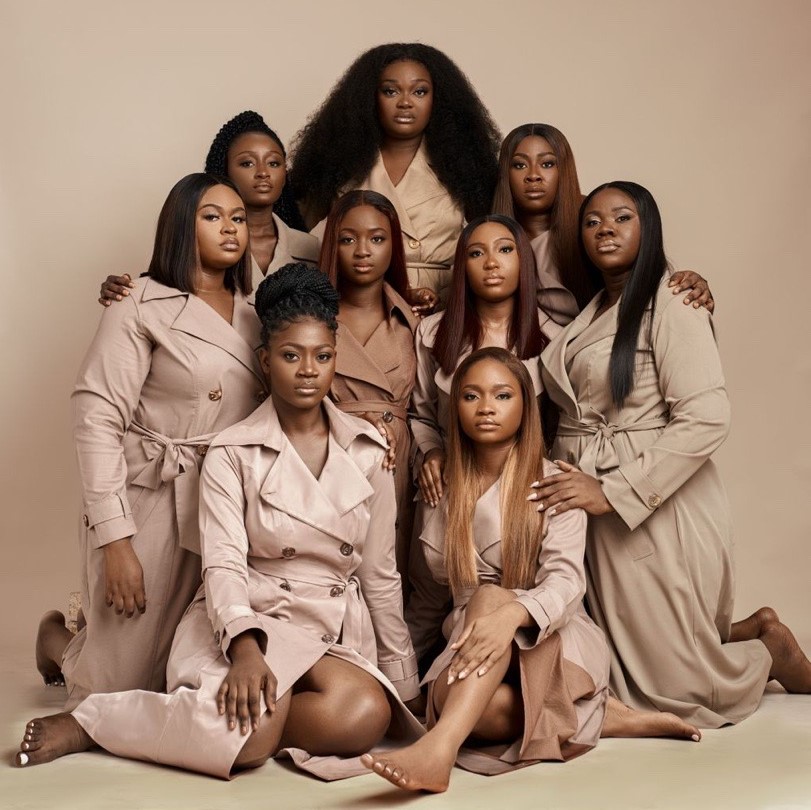
Symbolism
With the increasing recognition of diversity, the colour Nude has generally expanded to a broader range in beauty and fashion. Nude represents neutrality and balance.
Many people hold on to certain stereotypes about how a woman should look or behave, neglecting that there’s diversity among us. Every woman has her uniqueness, whether skin tone, size, intelligence, or general characteristics; these traits make us infinitely versatile. Women should be able to express themselves how they wish to and be respected for it.
Darker-skinned women have especially shied away from Nude colours because it usually targeted White women. But black women have dismantled the stereotypes and have come forward to wear nude with effortless confidence.
Nude is not just one colour; it represents an entire colour palette. By composition, all nude hues are a mixture of different proportions of other colour components. They might look the same but come in a much larger spectrum, just like us.
Brief History of IWD
Women worldwide have celebrated International Women’s Day (IWD) Since the early 1900s, but it wasn’t until 1975 that the United Nations recognised it as a holiday. And from 1975 till now, it has become mainstream and is now celebrated as a global holiday by women worldwide.
International Women’s Day is marked on March 8 yearly to raise awareness of gender inequality, violence against women, equal wage rights, and other forms of economic, social, and medical discrimination against women. It is a day set aside to honour the challenges and accomplishments that went into how Women’s Day was founded.

IWD2023: #EmbraceEquity
This year’s International Women’s Day campaign implores people to be catalysts for change by embracing equity, eliminating prejudice and discrimination, and encouraging inclusion.
IWD aims to honour women’s accomplishments and promote gender equity. As much as ths is a known fact, it’s not just a holiday like Christmas or Easter; it has a significant impact. But, it is more important than a single day and shouldn’t be devalued by the choice to celebrate only once a year. It marks the start of a sustained effort to protect women’s rights and advance gender equality in the workplace. Its impact should create lasting change that evolves beyond the commemorative day.
Embracing Equity in today’s Workplace Culture
PS: Equity should not be confused with equality
The concept of workplace equity connotes that each employee should be given fair and equal chances based on their unique skills, irrespective of tier gender, age, ethical background, or beliefs. Equity in the workplace supports inclusivity, fair treatment, access, and an enabling environment for mutual advancement for everyone in the organisation.
Our workplace, MediaFuse-Dentsu, comprises diverse people with different orientations and unique skill sets. Hence, teams must understand how to foster an inclusive and enabling work environment where individual team members can grow.
Here are some examples of how we can foster workplace equity:
Using Your Network and Influence
Gaining opportunities, promotions, and access to information all depend on having the appropriate connections and contacts. Individuals can use their networks to connect with others and open doors for qualified women. You can start by finding out more about the need for a network of supporters for women, including connecting them to the right mentors.
Wage Transparency
Being honest about salaries and communicating how employee success affects pay is necessary. The problem of unequal pay is eliminated because of transparency. Women can quickly tell if they are making less money than their male counterparts. Transparency helps to know that they are being paid fairly.
Skill-based promotion and hiring
Rather than emphasizing degree requirements, pay attention to their skills and prior work experience while interviewing job candidates. You can find and hire star performers who you have previously passed over by basing hiring decisions on a person’s skills.
Equity in Benefit
Workplace Equity ensures that benefits and resources are customized to meet the requirements of each employee. Every employee must have access to benefits like health insurance, financial and retirement plans, maternity and paternity leaves, paid time off, and employee discounts, regardless of gender identity or parental status.
Inclusive Incentives
When it comes to incentives and rewards, Employers should provide reward incentives based on their contributions and achievements in the workplace. This will motivate and encourage performance and create a more supportive workplace.

In conclusion, workplace is more inclusive and varied if equity is prioritised. All employees have equal opportunity to participate with, contribute to, and connect with their organisation; they all feel heard and seen. We hope this year’s International Women’s Day reminds us to be even more considerate and open to women from other continents, communities, and cultures on this day and beyond. Henceforth, let us learn to embrace equity in the workplace and outside of it.
Written by Ibukunoluwa Okusanya, D’Agle Systems Nigeria
